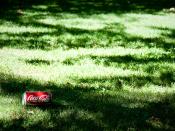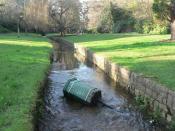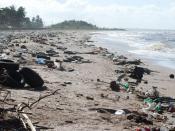Bailey, D. (1991). What we can do about litter. New York: Franklin Watts.
What we can do about litter is a book designed to educate children about litter, why
it is a problem, and how they can help to eliminate the problem. This book is very well
constructed and is extremely concise. Each aspect of litter discussed is divided into a topic
and is clearly labeled with headings. This allows the reader to learn in a step-by-step
progression from what litter is, to the activities they can do themselves to help eliminate this
problem.
The author starts out by clearly defining litter as "trash that has been dropped
carelessly, or has not been collected and put in a garbage can." She explains that it is not
just one person creating this litter problem, but it is a culmination of many people and
businesses. The book then goes on to show the different environments where litter is a
problem and gives examples in cities, countrysides, the ocean and beachfront areas.
Throughout these topics, there are bolded key words such as "recycled," "illegal
dumping," "health hazard," and "biodegrade" that can easily be looked up in the book's
glossary. In addition, the table of contents and subheadings provide quick reference and
ease of reading. The book is very user friendly for teachers as well as the independent
young reader.
The author demonstrates how litter can affect people in cities, but her emphasis is
how it affects the wildlife in the countryside, rivers and lakes. "Every year, thousands of
small animals die when they get trapped in bottles and cans." She also tells of how animals
can be poisoned by carelessly discarded cans that held paint and other chemicals. "Litter
thrown into rivers and lakes is just as dangerous. Many wild duck...


